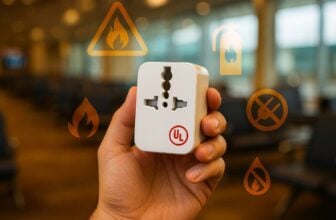Embarking on an RV road trip is one of the most exhilarating travel experiences you can imagine. Picture the freedom of the open road, the thrill of discovering new destinations, and the comfort of having your own little home on wheels. Whether you’re winding through scenic highways, stopping at unexpected hidden gems, or enjoying the serenity of a secluded campground, an RV adventure offers endless possibilities and unforgettable memories.
However, the key to a perfect RV road trip lies in thorough planning. By taking the time to map out your journey, prepare your vehicle, and pack the essentials, you ensure a smoother and more enjoyable experience. Planning can help you avoid common pitfalls, save money, and maximize your time exploring new places.
Choosing the Right RV
Types of RVs
When it comes to selecting the perfect RV for your trip, understanding the different types available is crucial. Here’s a quick overview of the main categories:
- Class A: These are the largest and most luxurious motorhomes, built on a bus chassis. They offer ample living space, and high-end amenities, and are ideal for extended trips or full-time living. However, they can be challenging to drive and park due to their size.
- Class B: Also known as camper vans, these RVs are more compact and easier to maneuver. They are built on a van chassis and offer basic amenities such as a small kitchen, bathroom, and sleeping area. Class B RVs are perfect for solo travelers or couples.
- Class C: These mid-sized RVs are built on a truck or van chassis, featuring an over-cab sleeping area. They strike a balance between space and drivability, making them a popular choice for families and groups.
- Travel Trailers: These are towable units that come in various sizes and styles. They offer flexibility as you can detach your vehicle for day trips. Travel trailers are a great option for weekend getaways or seasonal camping.
- Fifth Wheels: These large, towable trailers are hitched to the bed of a pickup truck. They provide abundant living space and are known for their stability and comfort. Fifth wheels are ideal for long-term travels or family vacations.
Renting vs. Buying Considerations
Deciding whether to rent or buy an RV depends on several factors:
- Frequency of Use: If you plan to embark on numerous road trips, buying an RV might be more cost-effective in the long run. However, if this is a one-time adventure, renting could save you money.
- Budget: Purchasing an RV involves an upfront investment, ongoing maintenance, storage fees, and insurance costs. Renting, on the other hand, offers the flexibility to choose different RV types for each trip without long-term commitments.
- Experience Level: For first-time RVers, renting provides a low-risk way to get a feel for the RV lifestyle before making a significant purchase.
Key Features to Look for in an RV
When choosing an RV, consider the following essential features to ensure a comfortable and enjoyable journey:
- Sleeping Arrangements: Evaluate the sleeping capacity and layout. Ensure that the RV can comfortably accommodate all travelers.
- Kitchen Facilities: A well-equipped kitchen with a stove, refrigerator, and ample counter space is crucial for preparing meals on the go.
- Bathroom Size: Consider the size and layout of the bathroom, especially if you plan to spend a lot of time on the road.
- Storage Space: Look for sufficient storage for your belongings, including clothing, gear, and food supplies.
- Climate Control: Ensure the RV has proper heating and cooling systems to keep you comfortable in various weather conditions.
- Drivability: Test the vehicle’s drivability, especially if you’re new to operating larger vehicles. Features like backup cameras and automatic leveling systems can be beneficial.
Choosing the right RV tailored to your needs and preferences sets the foundation for a memorable and stress-free road trip.
Planning Your Route
Mapping out your RV road trip route is a key step in ensuring a smooth and enjoyable journey. When you carefully plan your destinations and stops, you can make the most of your adventure while avoiding common pitfalls and surprises.
Mapping Out Your Destinations and Stops
Begin by deciding on the major destinations you want to visit, considering both the time you have available and your interests. Are you aiming to explore national parks, coastal towns, or historic landmarks? Create a list of must-see spots and any attractions you’d like to explore along the way. Once you’ve pinpointed your main stops, research RV-friendly campgrounds, rest areas, and attractions nearby.
Incorporate a mix of well-known and lesser-known locations to keep your journey exciting and varied. Remember to consider factors like driving distances and desired overnight stays to maintain a balanced itinerary.
Using RV-Friendly Navigation Tools and Apps
The right tools can make navigating your RV road trip much easier. Several apps and GPS systems are specifically designed for RV travel, helping you find the best routes, avoid low-clearance bridges, and locate essential services like dump stations and fuel stops. Popular RV navigation apps such as RV Trip Wizard, CoPilot RV, and Google Maps with RV mode offer valuable features to plot your course efficiently. These tools often provide information on road grades and weather conditions, making your drive safer and more pleasant.
Tips for Estimating Travel Time and Distance
Accurately estimating travel time and distance is crucial for a relaxed and enjoyable trip. Unlike car journeys, RV travel may require more frequent stops and slower speeds. Factor in rest breaks, meal stops, and sightseeing opportunities along your route. As a general rule, plan for an average speed of 50-60 miles per hour, accounting for the size and weight of your RV.
Use trip planning tools to gauge distances between stops and estimate travel times, ensuring you don’t overextend your daily driving limits. A well-paced itinerary allows you to fully experience your destinations without feeling rushed, making your RV road trip both exhilarating and memorable.
Preparing Your RV
Before embarking on your RV road trip, it’s crucial to ensure that your vehicle is in top condition and stocked with all the essentials. Proper preparation can prevent breakdowns and ensure a smooth, enjoyable journey.
Essential Maintenance Checks Before Hitting the Road
- Engine and Fluid Levels: Check the engine oil, coolant, brake fluid, transmission fluid, and windshield washer fluid. Top off any low fluids and change the oil if necessary.
- Tires: Inspect all tires for wear and proper inflation. Don’t forget to check the spare tire as well.
- Brakes and Lights: Test your brakes, headlights, tail lights, turn signals, and brake lights to ensure they are all functioning correctly.
- Battery: Check the battery’s charge and clean any corrosion from the terminals.
- Propane System: Inspect the propane tanks, lines, and appliances for leaks. Ensure they are in good working condition.
- Water System: Flush and sanitize the fresh water tank and check all water lines and connections for leaks.
- Roof and Seals: Inspect the roof for any damage or leaks and ensure all seals around windows, doors, and vents are intact.
- Safety Equipment: Verify that fire extinguishers, smoke detectors, carbon monoxide detectors, and first aid kits are present and in working order.
Stocking Up on Necessary Supplies and Equipment
- Kitchen Supplies: Bring cookware, utensils, dishes, and food storage containers. Stock your pantry with non-perishable foods and snacks.
- Personal Items: Pack clothing, toiletries, medications, and any other personal necessities.
- Camping Gear: Include outdoor chairs, tables, a grill, and other camping accessories.
- Cleaning Supplies: Bring essential cleaning products, trash bags, and laundry detergent.
- Emergency Supplies: Have a toolkit, jumper cables, spare parts, and a roadside emergency kit.
- Entertainment: Pack books, games, and electronic devices to keep everyone entertained on the road.
- Outdoor Essentials: Don’t forget sunscreen, insect repellent, and other items for outdoor adventures.
Organizing Storage for Convenience and Safety
- Weight Distribution: Distribute heavy items evenly to maintain vehicle stability and balance.
- Securing Items: Use straps and bungee cords to secure loose items and prevent shifting during transit.
- Accessible Storage: Keep frequently used items within easy reach, such as snacks, maps, and first aid supplies.
- Labeling Bins: Use labeled bins or containers for organizing smaller items, making them easier to find and preventing clutter.
- Outdoor Storage: Store outdoor gear and less frequently used items in exterior compartments.
By conducting essential maintenance checks, ensuring your RV is well-stocked, and organizing storage efficiently, you’ll be prepared for a seamless and enjoyable road trip.
Finding Campgrounds and RV Parks
Researching and Booking Popular Campgrounds in Advance
One of the keys to a successful RV trip is knowing where you’ll park for the night. Popular campgrounds can fill up quickly, especially during peak travel seasons.
Start your research early and consider booking your spots in advance to ensure you have a place to stay. Websites like Recreation.gov, KOA.com, and ReserveAmerica.com can help you find and reserve campgrounds in national parks, state parks, and private RV parks. Reading reviews and checking out ratings can give you insights into the quality and suitability of each site for your needs.
Understanding the Amenities and Services Offered
Before making reservations, it’s important to understand the amenities and services offered at each campground. Some parks offer full hookups, including water, electricity, and sewer connections, while others may only provide basic facilities. Look for essential features like clean restrooms, showers, laundry facilities, and WiFi access, especially if you plan to stay for an extended period.
Additionally, check if the campground has amenities such as swimming pools, playgrounds, and hiking trails that can enhance your stay. Knowing what to expect helps you prepare and ensures a comfortable experience.
Tips for Staying in Free Camping Spots (Boondocking)
Boondocking, or staying in free camping spots, can be a great way to save money and enjoy a more adventurous experience. Look for boondocking opportunities on public lands managed by the Bureau of Land Management (BLM) or in National Forests, where you can often camp for free or for a minimal fee.
It’s important to arrive early to secure a good spot and practice Leave No Trace principles to preserve these beautiful areas. Make sure your RV is self-sufficient by bringing extra water, a portable toilet, and a power source like solar panels or a generator. Apps like Campendium and Freecampsites.net can help you locate free camping spots and read reviews from other RVers.
Packing List Essentials
Having a well-organized packing list ensures you don’t forget any crucial items for your RV road trip. Below are the essential categories to consider when packing.
Clothing and Personal Items
- Clothing: Pack versatile clothing that can be layered for varying weather conditions, including t-shirts, sweaters, jackets, shorts, pants, and undergarments. Don’t forget swimwear if you plan to hit the pool or beach.
- Footwear: Bring comfortable walking shoes, sandals, and weather-appropriate shoes like rain boots or hiking boots.
- Toiletries: Include travel-sized shampoo, conditioner, soap, toothbrush, toothpaste, deodorant, and other personal hygiene products.
- Medications: Pack any prescription medications, along with over-the-counter essentials like pain relievers, allergy meds, and a basic first-aid kit.
- Accessories: Sunglasses, hats, and belts can make your trip more comfortable and stylish.
- Rain Gear: Ponchos or rain jackets are vital if you encounter wet weather.
Kitchen Supplies and Food Staples
- Cookware and Utensils: Bring pots, pans, spatulas, tongs, knives, and cutting boards. Don’t forget measuring cups and can openers.
- Dishes and Cutlery: Pack enough plates, bowls, mugs, glasses, knives, forks, and spoons for everyone on the trip.
- Food Storage: Bring plastic containers, zip-lock bags, and aluminum foil for storing and protecting your food.
- Non-Perishable Foods: Stock up on canned goods, pasta, rice, dry beans, and cereals. Snacks like granola bars, nuts, and dried fruit are also helpful.
- Condiments and Spices: Salt, pepper, and your favorite seasonings can make all the difference in your meal prep.
- Beverages: Include bottled water, tea, coffee, and juice boxes or soda.
Safety and Emergency Gear
- First-Aid Kit: Ensure it’s fully stocked with bandages, antiseptics, pain relievers, and any specific medical supplies your family might need.
- Roadside Emergency Kit: Have jumper cables, tire repair kits, flares, and a reflective vest on hand.
- Spare Parts: Pack essential spare parts like fuses, bulbs, and extra batteries for your RV.
- Fire Extinguishers: Ensure you have at least one accessible and fully charged fire extinguisher.
- Personal Safety Gear: Include items such as a whistle, multi-tool, flashlight, and extra blankets.
Entertainment and Recreational Gear
- Books and Magazines: Pack some reading materials for those relaxing moments.
- Games and Puzzles: Bring along board games, card games, and puzzles for fun family time.
- Electronic Devices: Tablets, laptops, and portable chargers can keep you entertained on the go. Don’t forget your headphones!
- Outdoor Gear: Include items such as fishing rods, bicycles, hiking poles, and binoculars for exploring nature.
- Sports Equipment: Bring along a football, frisbee, or other sports gear for some outdoor fun.
By ensuring you have all the essentials packed, you can set off on your RV adventure ready for whatever the journey brings!
On the Road Tips
Embarking on an RV adventure is thrilling, but it also requires careful planning and awareness to ensure a smooth and enjoyable journey. Here are some essential tips for driving and maneuvering your RV safely, managing your resources, and staying connected while on the road.
Driving and Maneuvering an RV Safely
Driving an RV is different from driving a regular car, and awareness of its size is crucial. Here are some tips to help you navigate:
- Know Your RV’s Dimensions: Be mindful of the height, width, and length of your RV. Low bridges, narrow lanes, and tight corners can present challenges.
- Take It Slow: Drive at a slower pace, especially in adverse weather conditions and on unfamiliar roads. This gives you more reaction time.
- Plan Your Route: Use RV-friendly GPS navigation systems or apps to find routes that accommodate large vehicles, avoiding low clearances and weight-restricted roads.
- Practice Turns and Parking: Spend time practicing turns, backing up, and parking in a safe, empty space before hitting the road.
- Use Mirrors and Cameras: Utilize all mirrors and backup cameras to get a full view of your surroundings, reducing blind spots.
- Stay Alert: Long drives can be tiring. Take regular breaks, switch drivers if possible, and stay hydrated.
Managing Fuel, Water, and Waste
Efficiently managing your RV’s resources will keep your trip running smoothly:
- Fuel: Always keep an eye on your fuel gauge and fill up regularly to avoid running out in remote areas. Plan your stops and know the locations of RV-friendly gas stations along your route.
- Water: Conserve water by taking shorter showers and turning off the tap while lathering soap or brushing your teeth. Refill your freshwater tanks at designated refilling stations.
- Waste: Familiarize yourself with the process of emptying your black and grey water tanks at dump stations. Use environmentally-friendly RV toilet paper to prevent clogs, and regularly monitor your tank levels to avoid overflows.
Staying Connected: Internet and Phone Access on the Go
Staying connected while traveling is important for navigation, entertainment, and keeping in touch with loved ones:
- Mobile Hotspots: Invest in a mobile hotspot device for reliable internet access. Many carriers offer plans specifically for RVers that provide extensive coverage and data.
- Signal Boosters: If you plan to venture into more remote areas, consider a cell signal booster to enhance your phone’s connectivity.
- WiFi Access: Look for campgrounds that offer WiFi; however, be prepared for varying quality. Having a backup plan like a mobile hotspot can ensure you stay connected.
- Apps and Tools: Download essential apps for RV travel such as Google Maps, weather updates, and campground finders to make your journey more convenient.
By following these on-the-road tips, you can navigate the roads confidently, manage your RV’s resources efficiently, and stay connected with ease. Enjoy your journey!
Enjoying the Journey
While the journey itself can be a thrilling part of RV travel, making the most of your stops and sightseeing opportunities can enrich your experience even further. Here are some tips to help you enjoy every moment of your adventure.
Making the Most of Your Stops and Sightseeing Opportunities
- Plan Ahead: Research interesting attractions and scenic locations along your route. Websites, travel blogs, and RV apps can provide valuable insights and recommended stops.
- Be Flexible: While having a plan is great, be open to spontaneous stops. Sometimes the best experiences are unplanned discoveries.
- Local Culture: Take time to explore local culture by dining at local restaurants, visiting museums, and attending community events. It’s a great way to enrich your travel experience and learn about regional traditions.
- Nature Spots: Seek out national parks, hiking trails, and nature reserves. These locations offer wonderful vistas and a chance to connect with nature.
- Relax and Recreate: Use your stops as an opportunity to unwind and rejuvenate. Set up a picnic, swim in a lake, or simply enjoy a sunset.
Capturing Memories: Photography and Journaling Tips
Documenting your RV adventure allows you to preserve memories and share your experiences with loved ones:
- Photography Tips:
- Golden Hours: Shoot photos during sunrise or sunset when the lighting is soft and warm.
- Composition: Use the rule of thirds to compose balanced and visually appealing shots.
- Details: Capture not only landscapes but also small details and candid moments.
- Editing: Use photo-editing apps to enhance your pictures, but keep them natural-looking.
- Journaling Tips:
- Daily Entries: Dedicate a few minutes each day to write about your experiences, thoughts, and feelings.
- Detailed Descriptions: Document the sights, sounds, and smells to evoke vivid memories.
- Sketching: Add simple sketches of your surroundings or highlights of your day to your journal.
- Keepsakes: Include mementos like ticket stubs, postcards, and pressed flowers to make your journal unique.
Engaging in Fun Activities and Exploring Nature
- Outdoor Activities:
- Hiking and Biking: Maps and apps can help you find trails that suit your fitness level and preferences.
- Fishing: Many campgrounds are near lakes and rivers. Bring your fishing gear and enjoy some quiet time.
- Stargazing: Set up a telescope or simply lie back and gaze at the night sky. Use apps to identify constellations and planets.
- Engaging Activities:
- Games: Bring along board games, cards, and outdoor games like frisbee or bocce ball to keep everyone entertained.
- Crafts: Pack craft supplies for creative projects. This can be particularly enjoyable for kids during downtime.
- Cooking: Try cooking local recipes over a campfire or in your RV kitchen. It’s a fun and tasty way to experience local flavors.
By taking full advantage of your stops, documenting your experiences, and engaging in diverse activities, you’ll ensure that your RV journey is filled with fun, relaxation, and lasting memories. Enjoy every moment!
Conclusion
Thorough planning is essential for a successful and enjoyable RV adventure. By taking the time to prepare your vehicle, map out your journey, and consider the tips and strategies we’ve outlined, you can navigate the open road with confidence and ease.
Efficiently managing your RV’s resources, staying connected, and making the most of your stops will enhance your travel experience. Remember to capture the memories you make along the way and engage in fun activities that bring joy and relaxation.
Now that you’re equipped with the knowledge and tools you need, it’s time to embark on your RV adventure. Embrace the freedom of the journey, explore new destinations, and create unforgettable memories. Happy travels!
Additional Resources
Here is a list of useful websites, apps, and guides to help you make the most of your RV travels:
Websites
- Campendium – Discover and review campgrounds, RV parks, and free camping locations across North America.
- Go RVing – A comprehensive resource offering tips, destination ideas, and RV purchasing guides.
- FreeCampsites.net – A community-driven site dedicated to finding free campgrounds and boondocking locations.
- Roadtrippers – Plan your route with this tool that highlights interesting stops, scenic drives, and attractions.
Apps
- RV Parks & Campgrounds – An app to find RV parks, campgrounds, and rest areas with user reviews and ratings.
- GasBuddy – Locate the cheapest fuel prices along your route to save on costs.
- AllTrails – Explore hiking, biking, and running trails with detailed maps and reviews.
- WeatherBug – Stay updated with real-time hyperlocal weather forecasts and alerts.
- iOverlander – Find camping spots, water fill stations, and other useful points of interest contributed by fellow travelers.
Guides
- The Ultimate RV Handbook by Ted Boone – A comprehensive guide covering everything from maintenance to trip planning.
- Moon USA RV Adventures by Mark Sundeen – Detailed itineraries and tips for extraordinary RV road trips across the U.S.
- A Beginner’s Guide to Living in an RV by Alyssa Padgett – Practical advice for those new to the RV lifestyle.
- RV Cooking Made Easy by Heather Schlueter – Enjoy delicious meals on the road with simple and tasty RV kitchen recipes.
- National Geographic’s Guide to Scenic Highways and Byways – Discover America’s scenic routes and breathtaking landscapes.
By utilizing these resources, you can enhance your travel experience, find great spots, and connect with the RV community. Happy RV’ing!
Share Your Experiences
We’d love to hear about your own RV road trip adventures! Share your experiences, tips, and favorite destinations in the comments below. Your stories and advice could inspire and help fellow travelers on their next journey.
Stay Connected
For more travel tips, destination guides, and RV lifestyle articles, make sure to subscribe to our blog. You can also follow us on social media for the latest updates and to join a community of enthusiastic RVers. Connect with us on:
- Facebook: Viral Rang on Facebook
- Twitter: ViralRang on X.com
- Pinterest: Viral Rang on Pinterest
Happy travels, and we look forward to reading your stories!





